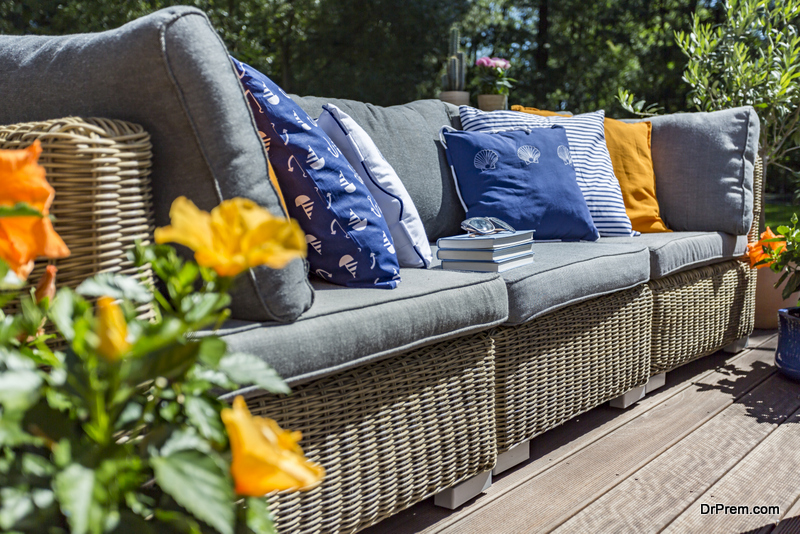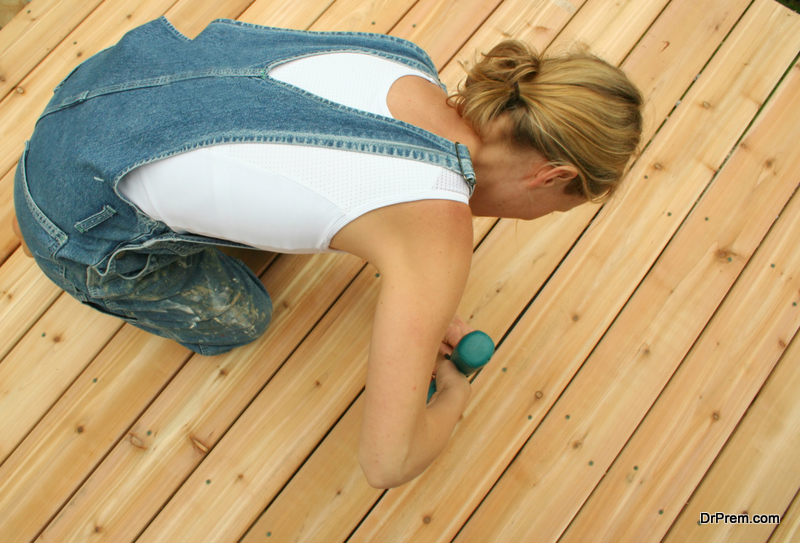In many locations and real estate markets, outdoor living is just as important as the square footage inside of a home. But if you’re going to spend so much time focusing on outdoor living spaces like decks, porches, and pools, you need to ensure you’re taking eco-friendliness and sustainability into account.
6 Eco-Friendly Outdoor Living Tips
“Whether you are designing a completely new outdoor living space or seeking inspiration to transform your current patio into an eco-friendly backyard oasis, going green in your design is a great way to lower your home’s environmental impact, save money every month and limit the toxins to which your family, guests and pets are exposed,” Install-It-Direct explains.
The choices you make will depend on a number of factors, including your budget, aesthetic preferences, local climate, and any building codes or HOA restrictions that limit your options. Having said that, you may find the following tips helpful:
1. Choose the Right Materials
 Be smart and intentional about the materials you use to construct outdoor living spaces. If you’re building a deck, Lifetime Exteriors suggests cedar or Trex (a popular engineered wood that mimics the appearance of natural hardwoods but holds up for years with little need for ongoing maintenance).
Be smart and intentional about the materials you use to construct outdoor living spaces. If you’re building a deck, Lifetime Exteriors suggests cedar or Trex (a popular engineered wood that mimics the appearance of natural hardwoods but holds up for years with little need for ongoing maintenance).
When it comes to furniture and decor, shop from companies that prioritize sustainability. Some of the most eco-friendly brands include APT2B, Viva Terra, Serenity Health, LA SIESTA, and Contemporary Furniture Warehouse.
2. Work with the Landscaping
The biggest mistake you can make is trying to fight with your landscaping. There’s nothing wrong with changing the look and feel of your property, but a complete overhaul is neither cost-effective nor eco-friendly.
Use shade to your advantage by placing outdoor living areas near trees and other natural canopies. This will keep you cooler during the warmer months (which is typically when you’ll want to use these spaces).
3. Utilize Rainwater
 Turn your property into a sustainable slice of land by reusing rainwater for land irrigation. One simple way to do this is by diverting downspouts into cisterns that you can then use to water plants. Here are a few ideas for inspiration.
Turn your property into a sustainable slice of land by reusing rainwater for land irrigation. One simple way to do this is by diverting downspouts into cisterns that you can then use to water plants. Here are a few ideas for inspiration.
4. Use Earth-Friendly Lighting
Outdoor lighting serves three primary purposes: (1) to illuminate the area, (2) to guide people to and from different parts of the landscape, and (3) to highlight interesting landscape features and accentuate the more attractive aspects of your property.
The key to proper outdoor lighting is to use solutions that are energy efficient and bright enough to serve the intended purpose. Solar paths are fine for “guide” lights along a pathway, but won’t be bright enough for general illumination or landscape features. In these cases, you’ll need wired lights with energy efficient LED bulbs.
5. Be Bee-Friendly
 Bees make the world go round. Without an adequate population of honeybees, the world would slowly fall apart. Do your part to maintain healthy bee populations in your local community by designing your outdoor living areas with these little insects in mind.
Bees make the world go round. Without an adequate population of honeybees, the world would slowly fall apart. Do your part to maintain healthy bee populations in your local community by designing your outdoor living areas with these little insects in mind.
“A collection of pollen and nectar producing plants will encourage native bees to stick around, and providing them with a pesticide-free place to grab food will help the population thrive,” Lumens.com mentions.
6. Switch to Electric
When it comes to maintaining your outdoor living areas and landscaping, consider making the switch from gas tools to electric tools. Over the past few years, electric lawnmowers, weed eaters, blowers, and pressure washers have become more powerful and practical. The batteries last longer than ever, charge faster than ever, and provide an eco-friendly alternative to gas engines.
The trick to making electric work is to buy enough batteries. Two batteries are required for larger yards. This allows you to charge one battery while using the other. If you plan to use multiple tools at once, you may need three or four batteries. This will add some cost up front, but ultimately saves you money down the road.
Improve Your Home’s Eco-Friendliness
By prioritizing both aesthetics and eco-friendliness, you can make an investment that looks good and simultaneously adds value to your property. Use this article as a starting point, but don’t limit yourself to just these tips and tricks. There’s plenty of room for creativity – so get brainstorming!
Article Submitted By Community Writer




